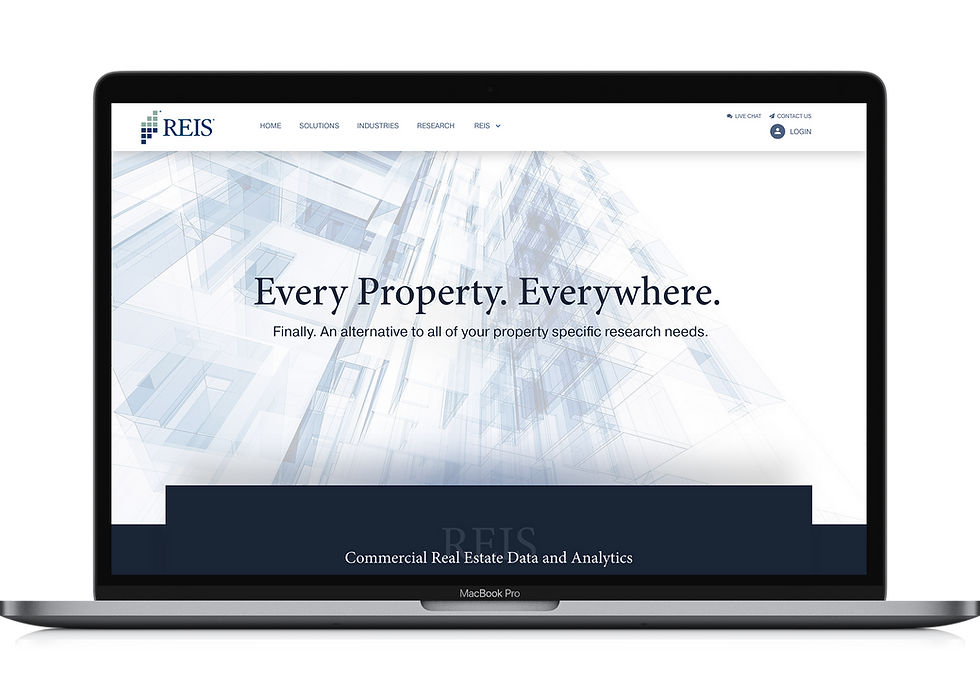@ VMware Inc. All rights reserved
Mapping complex needs across 10+ business units to reduce public cloud spend and improve resource utilization

H2O
Turning User Insight into Infrastructure Efficiency
1. Overview
H2O was a platform initiative to help teams at VMware better acquire and manage internal hardware resources—something that was previously opaque, manual, and inconsistent across business units. I led the end-to-end product design, aligning user needs with business goals through deep stakeholder workshops, cross-org research, and system-level design thinking. The outcome was a scalable UX foundation that brought transparency to allocation, clarified ownership, and ultimately helped reduce reliance on costly public cloud usage.
Key Impact
Cloud Cost Savings
Saved $20M/year by reclaiming underutilized hardware and on-demand infra across 10+ BUs
Faster Resource Acquisition
Cut down provisioning time from 1–3 months → 2–5 days
Smarter Utilization
Reclaimed 30% underutilized hardware back into the system
Lifecycle Transparency
Prevented hoarding; enabled on-demand allocation & clear ownership
My Role
Lead & sole designer driving the project end-to-end
Took ownership from discovery to delivery
Collaborated closely with a quad team: PM • Engineering Manager (35 engineers) • System Architect • Business Stakeholders
Timeline
8 Months, 2021
Outcome
Realised Product from 0 to 1
2.1 The Problem
Provisioning hardware resources like ESXi hosts and VMs was slow and fragmented often taking 1–3 months.This led users to hoard resources, fearing delays if they had to request again. Over time, this behaviour created:
High-cost hardware sitting idle or underutilized
No visibility into who owned what
Siloed infrastructure with no sharing or planning
Inability to forecast or optimize resource spend
The cost wasn’t just operational it was behavioural. And that’s where design had the most power to intervene.
2.2 The Opportunity
We had the chance to design a system that made infrastructure on-demand, trackable, and shareable — reducing friction, increasing visibility, and encouraging better usage habits.
A single platform could:
Cut provisioning time
Expose real-time utilization
Prevent hoarding
Enable organizational planning
This was more than a UX challenge — it was an opportunity to drive behavioral and operational change at scale.
3. Discovery and Research
Key Takeaways
✅ Aligned stakeholders and engineering on problems, business goals, fears, and success metrics
✅ Interviewed 24 users across 10 BUs, uncovering two core mindsets
✅ Synthesized insights into core user needs, system expectations, and product principles
✅ Insights shaped the dual-path UX model, queuing logic, and requirement-first allocation
Stakeholder Alignment Workshop

Why it mattered
Before speaking to users, I needed clarity on the problem from the business side. I facilitated a hands-on workshop with stakeholders from engineering, architecture, and product.
Methods used
Word Association
Attribute Ranking
User-Centered Design Canvas
What we uncovered
⏱️
Delays led to hoarding - Requests took 1–3 months, so teams clung to what they had
🔒
Trust was fragile - Without reliability, users stopped returning resources
🧩
No unified experience - Disconnected tools and policies made infra hard to navigate
💸
Costs were invisible - With no usage data, public cloud spend spiraled
Outcome
I synthesized all inputs using affinity mapping, which shaped the research plan, success metrics, and system model.
View Full Stakeholder Research
User Research
What we did
Screened users based on business context
1:1 interviews with over 20+ users and 10 BUt, driven by real use cases and workflows
Affinity mapping to synthesize user pain points and patterns
Task-feature mapping to connect needs with functional priorities
What we learned
Static systems failed dynamic needs - one-size-fits-all didn’t cut it
Resource management was broken - people tracked infra in spreadsheets and Confluence
Trust and transparency were missing - poor visibility led to hoarding and underutilization
Users wanted control and clarity - but via very different mental models

What we uncovered
🧠
Two user archetypes clarified the product direction: “Disruptive Tinkerers” and “Adaptive Structurers”
🎯
Must-have features: requirement-driven discovery, dynamic allocation, system-driven queueing, and transparent utilization
📉
Exposed root issues: Hoarding, poor visibility, unmet needs, and broken workflows were slowing teams down.
🔍
Shifted the focus from building “a tool” to enabling trustworthy infrastructure flow
View Full User Research
Personas and Archetypes






4. Design Principles and Strategy
Design principles
Clarity first.
Cut through complexity make requesting and managing infra feel obvious.
Trust Through Transparency.
Be transparent about status, availability, and usage to build trust.
Guide, don’t gate.
Let users shape their needs; offer smart support, not constraints.
Stay consistent.
Keep UI and CLI aligned one experience, multiple ways in.
Build to grow.
Design in pieces that scale with teams, tech, and time.


Design Strategy
Meet users where they are.
Cater to both outcome-driven and spec-heavy users with tailored pathways.
Guide with smart defaults.
Offer helpful suggestions and templates, but leave room for control.
Earn back trust.
Prioritize speed, visibility, and consistency to rebuild confidence.
Design for decisions.
Use prompts, status, and insights to help users act smarter.
Think modular, build lean.
Approach the system holistically but ship value incrementally.
5. Information Architecture and Flows
System Overview


Plane
Top Level Modules
Purpose
User Plane
My Dashboard · Request Resources · My Resources · My Projects · System Health · Efficiency Calculator
Everything an engineer or team needs to request, track, and optimise hardware.
Admin Plane
Inventory · Manage Membership · Resource Pools · Reporting
Tools for operators to maintain assets, policies, and usage analytics.
This separation keeps everyday tasks lightweight for users while giving operators deep control.
Key User Flows
Flow
Why it matters
Core steps (simplified)
Requirement-driven Request
Fastest way to get new hardware without guessing specs.
Dashboard → Request Resources → Smart Suggestions / Manual Discovery → Review → Queue / Instant Allocate
Manage Project Resources & Access
Keeps teams organised, secure, and quota-aligned.
My Projects → Project List → Select Project → Add/Remove Resources or Members → Set Roles & Quotas → Save
Usage & Efficiency Check
Builds trust and prompts timely release of idle assets.
My Resources → Resource Analytics → Actions Required → Release or Renew
Everything above is mirrored in the CLI for power users—same steps, same logic, different surface.
IA Decisions
Outcome-first labels
“Request Resources” vs. “Provisioning”
“Efficiency Calculator” vs. generic “Reports”
Task-feature mapping to connect needs with functional priorities
Single entry for each job
All request paths funnel through Request Resources—one place to start, fewer dead ends.
Contextual shortcuts
“Quick Resource” and “Last Requested Resource” give frequent users one-click actions without navigating the full tree.
Parallel hierarchy
Admin modules mirror user concepts (e.g., Inventory ↔ My Resources) so terminology stays consistent across roles.
Design Trade-offs
Intent vs. technical parameters
Smart Suggestions couldn’t be 100 % task-only; the engine still needed a few key specs. We captured those upfront, then let the system fill the finer details via predefined “flavours.”
Power vs. guidance
Advanced filters live inside “Manual Discovery” while “Smart Suggestions” remains zero-config for new users.
Fresh data vs. Fast UI
Pool analytics refresh every few minutes detailed enough for decisions without bogging down the dashboard.
6. Ideation and Exploration
Research told us what users needed; these quick concepts helped us decide how to deliver it. We mocked, tested, and kept only what removed clicks, boosted clarity, and earned trust.
Dashboard Concepts


Concept
A — Section-by-Section
B — Single-Scroll Dashboard
What we tested
Each dashboard area (Action Required, Recent Activity...) lives under My Overview. Users drill in via left-nav.
One long page with jump-links at top. All cards visible in a single scroll.
Verdict
Clear, but too many clicks and context switches.
✅ Chosen. Fewer clicks, better “big picture”. Users said it “just makes sense”—though a bit dense; we mitigated with collapsible sections & anchor links.
Request-Resource Concepts


Concept
A — Tabs for Method
B — Smart-First, Manual Later
What we tested
Tabs up top (System Suggested pre-selected)
Smart Suggestion front-and-center; a single button to “Find Manually” if needed.
Verdict
Users could see their options upfront
Simpler but power users felt the manual path was hidden.
Hybrid Concept
What we tested
Verdict
One chooser page lists all 4 methods with brief help text → selected flow opens; in-flow switch lets users jump to another method any time.
Combines discoverability of A with clarity of B.
Project View
Dual-mode toggle on Project Details (“Project View” vs. “Personalised View”).
Tests showed users loved seeing everything first, then filtering to “what matters to me.” We kept the toggle, added gentle defaults, and surfaced key KPIs at top.

Resource List
Card grid + analytics summary resonated with users.
Final design increased data density (tags, lease status, cost) without adding visual noise.



7. Final Design and Execution
Scope: User + Admin planes, 12 core screens and their flows
Shipped: Web UI + CLI parity, WCAG-AA compliant
Impact: ↓ prov. time 95%, ↑ utilisation 40%


Single-Scroll Dashboard
Removes the click-hunt. Users get a “pulse check” in < 5 sec, yet can jump directly to any panel.
Hybrid Request Chooser
Surfaces every request path at once, eliminating guess-work. Users pick a method up-front, but can swap flows anytime without losing inputs.




Smart Suggestion Flow
Captures intent with the least friction. The flavour preset fills hidden tech specs so new users aren’t overwhelmed, yet results remain precise.
Resource List + Analytics
Merges strategic insight (quota, idle count) with tactical control (release/renew). Testing showed this mix best prompts users to act and stop hoarding.




Project / Personal Toggle
Teams see full project KPIs; individuals filter to “what concerns me.” Cuts noise without duplicating pages.


Admin View


Inventory Management
Lets operators triage hundreds of hosts in seconds. Bulk edits and filters replace spreadsheet hacks, driving faster maintenance and cleaner data.
Resource Pool Details
Brings quota, policy, and people into a single page, so admins can fine-tune access or capacity without context-switching.




Resource Pool Analytics
Turns raw pool data into actionable insights: see who’s under-using, where buffers are strained, and act before capacity risks hit production.
View Full Designs

8. Impact and Results
This is the missing link in our workflow everything’s finally in one place. I can hand back hardware without worry, knowing I’ll get what I need the moment I need it.
“
KPI Snapshot
Metric
Before
After
Δ
Provision time
30–90 days
2–5 days
-90 %
Idle / hoarded resources
30 %
reclaimed 30 %
+30 pp
Support tickets (L1)
100 %
-40 %
-40 %
Server-pool utilisation
37 %
68 %
+31 %
Stakeholder Wins
Group
Win
Dev & QA teams
Less wait, no more tracking in spreadsheets
PM/VPs
Clear cost & quota views; easier forecasting
Infra ops
Bulk actions + analytics cut triage time 40 %
Finance
Early data shows ~$20 M annual savings vs. public-cloud overflow
9. Reflections and What Stayed With me
What I’m proud of
Worked closely with engineering to build strong processes and shared ownership.
Brought design into technical spaces, even influencing architectural decisions.
Our personas weren’t just artifacts “Captain America” and “Iron Man” became shared language across the team.
Took time to sit with architects and really understand the space we were designing for.
What surprised me
A system redesign actually helped rebuild trust. Users no longer felt the need to hoard resources.
Even advanced users leaned on smart suggestions when it saved time it wasn’t just for new users.
Biggest lesson
Having design involved from day one shaped the product in a meaningful way.
Real impact came from deep cross-functional collaboration, not just design outputs.
You uncover powerful insights when you listen closely and get people to open up not just run interviews.
Ripple effects
This case study became a reference model for other teams.
I shared the cross-functional collaboration processes as a design talk at Shape, VMware’s internal design conference.
The “project view” we designed became a starting point for other teams building unified service management.
“At its core, this project was about making something engineers could finally trust — and that trust was designed.”
Got questions, thoughts, or feedback? let’s chat. I’m always open to learning more.